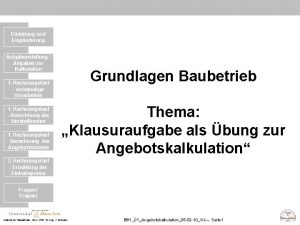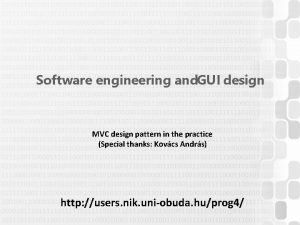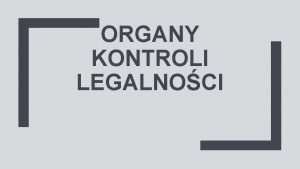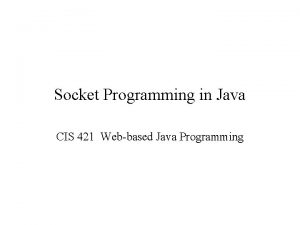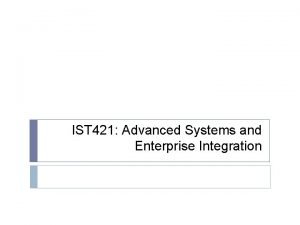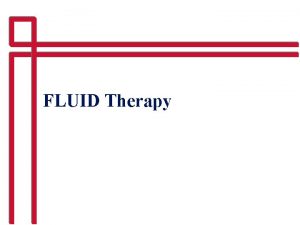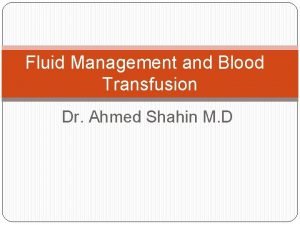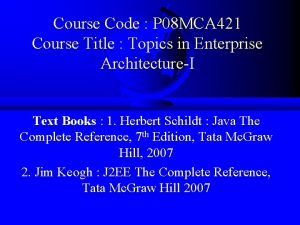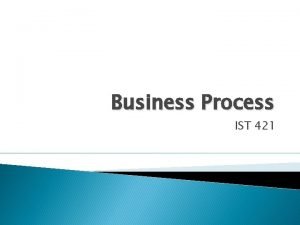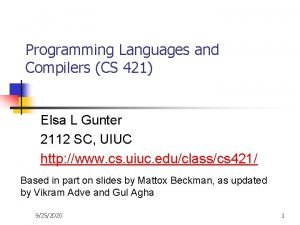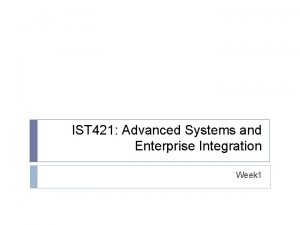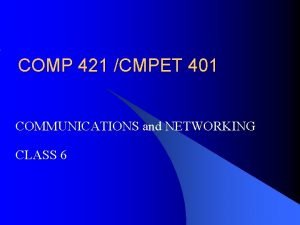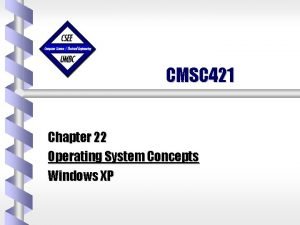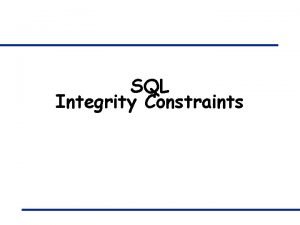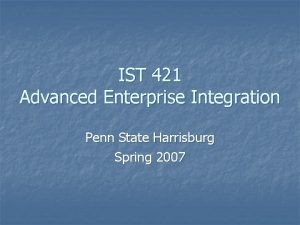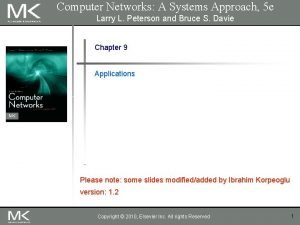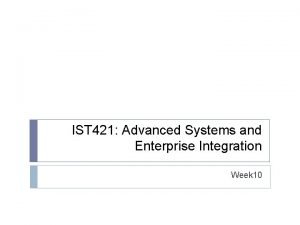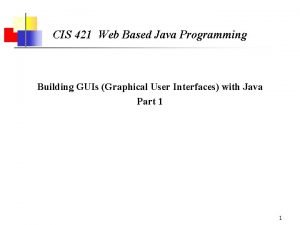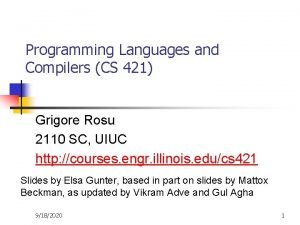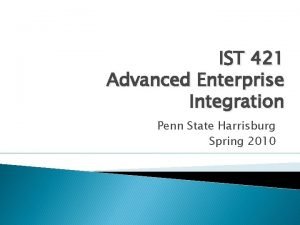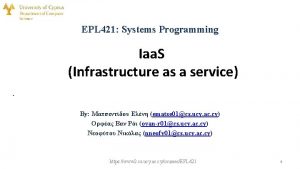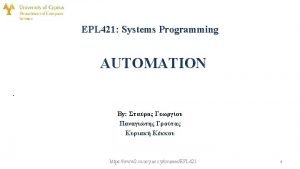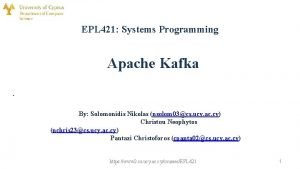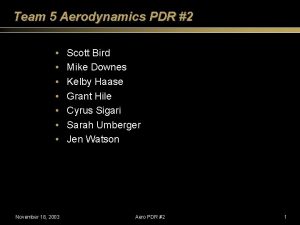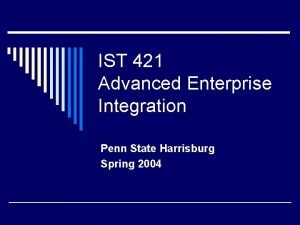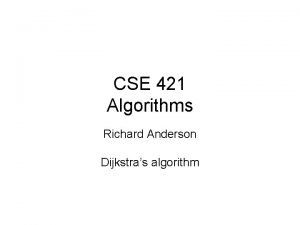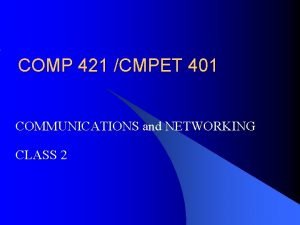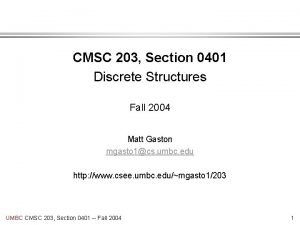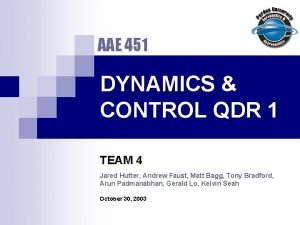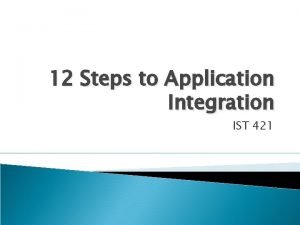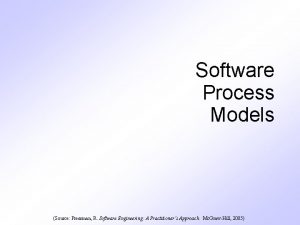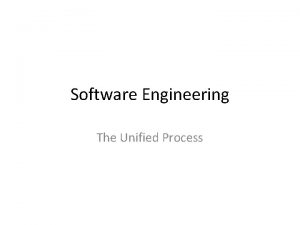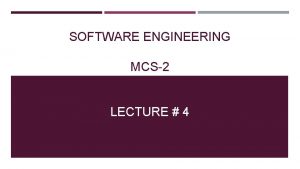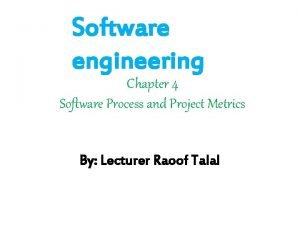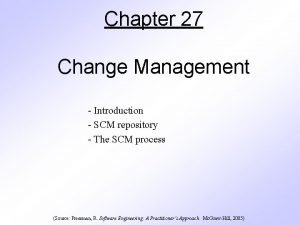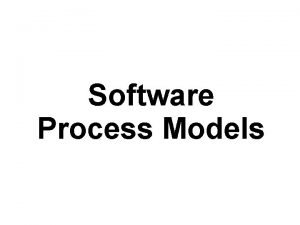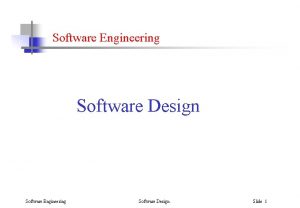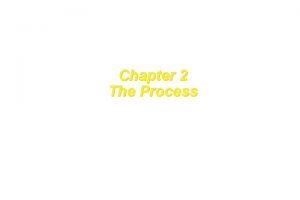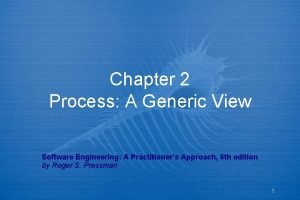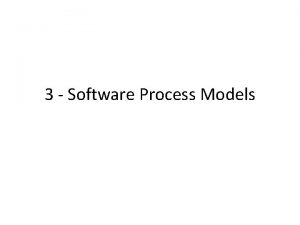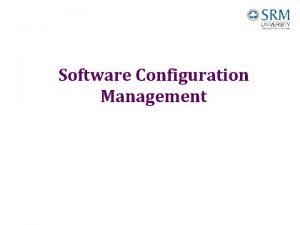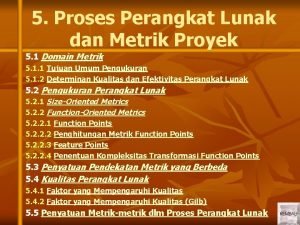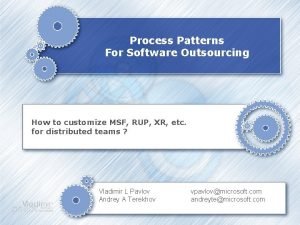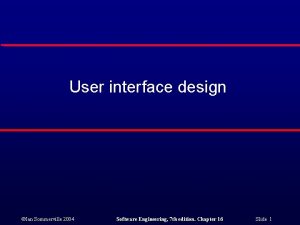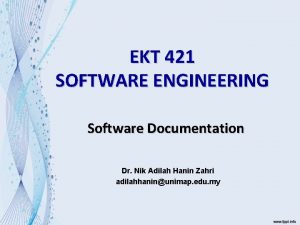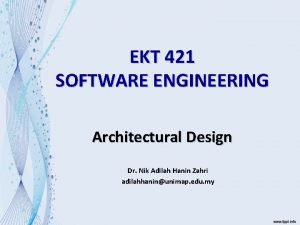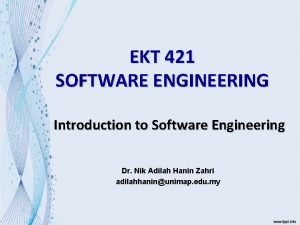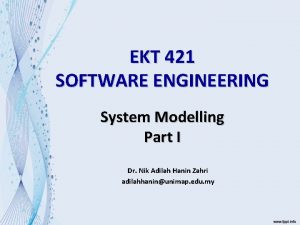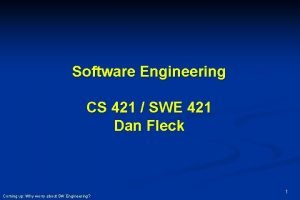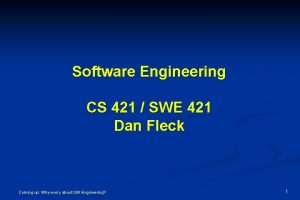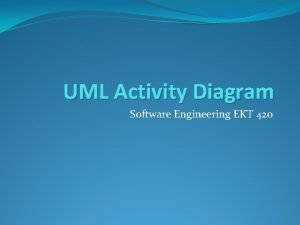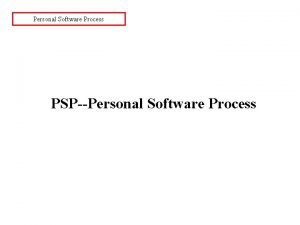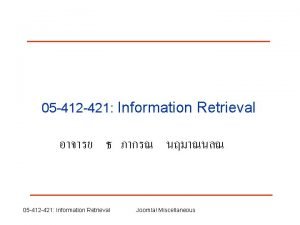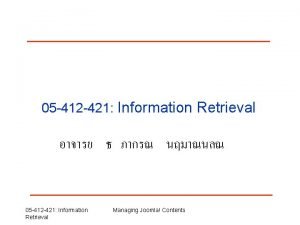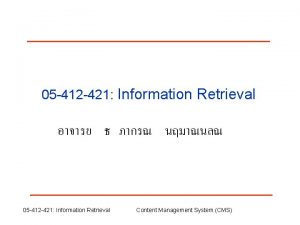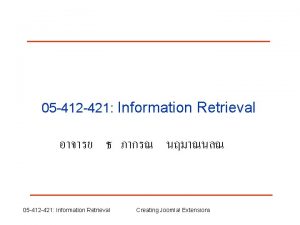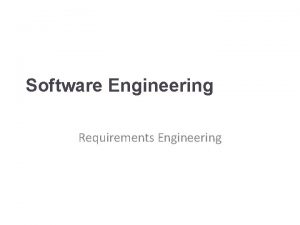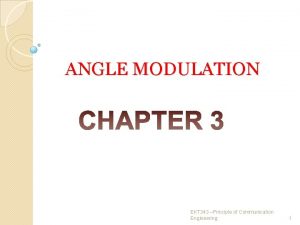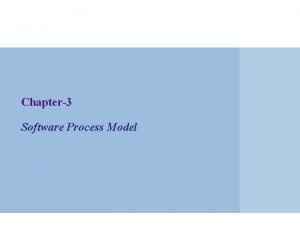EKT 421 SOFTWARE ENGINEERING Software Process Dr Nik

































































- Slides: 65

EKT 421 SOFTWARE ENGINEERING Software Process Dr. Nik Adilah Hanin Zahri adilahhanin@unimap. edu. my

Topics 1. Software Process Activities 2. Traditional Software Process Models l l l Waterfall Model Incremental Development Reuse-oriented Software Development 3. Changing System Requirements 4. Iterative Software Process Models l l 5. Boehm’s Spiral Model Rational Unified Process Agile Software Development

Software Process Activities

Software Process • Structured set of activities required to develop a software system • Many different software processes but all involve: Process Tasks 1. Specification defining what the system should do 2. Development (Design and Implementation) defining the organization of the system and implementing the system 3. Validation checking if the software produce meets the requirement by the customer 4. Evolution changing the system in response to changing customer needs • Software process model is an abstract representation of a process – presents a description of a process from some particular perspective

1. Software Specification • The process of establishing what services are required and the constraints on the system’s operation and development • Software specification development also known as requirement engineering – to produced an agreed requirements document that specifies a system satisfying stakeholder requirement

Requirements Engineering Process 1. 2. 3. 4. Is it technically and financially feasible to build the system? What do the system stakeholders require or expect from the system? Defining the requirements in detail Checking the validity of the requirements 1. Feasibility Study Feasibility Report 2. Requirement Elicitation and Analysis 3. Requirement Specification 4. Requirement Validation System Models User and System Requirements Requirement Documents

2. Software Design and Implementation • The process of converting the system specification into an executable system • Software design refers to designing a software structure that realises the specification • Implementation refers to the translation of the design structure into an executable program • The activities of design and implementation are closely related and may be inter-leaved

General Model of Design Process Design Input Design Activities Platform Information Requirements Specification Architecture Design Data Description Interface Design Component Design Database Design Outputs System Architecture Database Specification Interface Specification Component Specification

Design Activities Architecture Design Interface Design Component Design Database Design Architecture Design : identify the overall structure of the system, the principal components (sometimes called sub-systems or modules), their relationships and how they are distributed Interface Design : define the interfaces between system components Component Design : design how each system component will operate Database Design : design the system data structures and how these are to be represented in a database.

3. Software Validation • Verification and validation (V & V) is intended to show that a system conforms to its specification and meets the requirements of the customer • V & V involves checking and review processes and system testing – System testing involves executing the system with test cases taken from the specification of the real data

Testing Stages Component Testing • Individual components are tested independently • Components may be functions or objects or coherent groupings of these entities System Testing u u Testing of the system as a whole Testing of emergent properties is particularly important Acceptance Testing u Testing with customer data to check that the system meets the customer’s needs

Testing Phases In Plan-driven Software Process Requirement Specification System Specification Acceptance Test Plan Service System Design System Integration Test Plan Acceptance Test Detailed Design Sub-System Integration Test Plan System Integration Test Sub-System Integration Test Module and Unit Code and Test

4. Software Evolution • Software is inherently flexible and can change • The software evolve and change due to changing requirement of changing business circumstances • Although there has been a demarcation between development and evolution (maintenance) this is increasingly irrelevant as fewer and fewer systems are completely new

System Evolution Process Define System Requirement Access Existing System Propose System Changes Modify Systems New System

2. General Software Process Models

Category of Software Process • Software process are categorized into 2 types: 1. 2. Plan-driven processes Agile process Plan –driven Process all of the process activities are planned in advance and progress is measured against this plan. Agile Process planning is incremental (done phrase by phrase) and it is easier to change the process to comply with changing customer requirements • In practice, most practical processes include elements of both plan-driven and agile approaches • There are no right or wrong software processes

General Software Process Models • General software process models are: 1. 2. 3. The waterfall model l l Plan-driven model Separate and distinct phases of specification and development Incremental development l l Specification, development and validation are interleaved May be plan-driven or agile Reuse-oriented software engineering l l The system is assembled from existing components May be plan-driven or agile • In practice, most large systems are developed using a process that incorporates elements from all of these models

General Software Process Models The Waterfall Model

The Waterfall Model System’s services, constraints and goals are established by consultation with system users Allocates the requirements to hardware and software to produces overall system architecture The software design is realized as a program units, and unit testing will verify that each unit meets its specs Program units are integrated and tested as complete system according to its specs and delivered to customer. The system is installed for practical use. Maintenance includes correcting errors, and enhancing the system as per requirements

Benefits of Waterfall Model • Waterfall model should only be used when requirements are well understood and unlikely to change radically during development • Benefits: i. The process is visible so that the managers can monitor progress against development plan ii. Suitable for large systems engineering projects where a system is developed at several sites where the plan-driven nature of the waterfall model helps coordinate the work

Waterfall Model Problem i. ii. A phase has to be completed before moving onto the next phase Inflexible partitioning of the project into distinct stages cause difficulty to respond to changing customer requirements after the process is underway

Traditional Software Process Models Incremental Development

Incremental Development • A model that based on the idea of developing initial implementation, exposing to user comment and evolving it through several versions until adequate system has been developed • Specification , development and validation activities are interleaved rather than separate • Rapid feed back across the activities

Incremental Development Model Concurrent Activities Outline Description Specification Initial version Development Intermediate Version Validation Final Version

Incremental Development Benefits 1. The cost accommodating changing customer requirements is reduced l analysis and documentation that has to be redone is much less than the waterfall model 2. Easier to get customer feedback on the development work that has been done l customers can comment on demonstrations of the software and see how much has been implemented 3. More rapid delivery and deployment of useful software to the customer is possible l customers are able to use and gain value from the software earlier than the waterfall process

Incremental Development Problems 1. The process is not visible managers need regular deliverables to measure progress Ø • Ø Deliverables: a tangible or intangible object produced as a result of the project that is intended to be delivered to a customer such as a report, a document, a server upgrade if systems are developed quickly, it is not cost-effective to produce documents that reflect every version of the system 2. System structure tends to degrade as new increments are added Ø Ø regular change tends to corrupt the process structure incorporating further software changes becomes increasingly difficult and costly

Traditional Software Process Models Reuse-oriented Software Engineering

Reuse-oriented Software Engineering • Based on systematic reuse where systems are integrated from existing components or COTS (Commercial-off-the-shelf) systems • Reuse is now the standard approach for building many types of business system

Reuse-oriented Software Engineering Model Component search based on specification for implementation Modification of the requirement to reflect available component Requirement Specification Component Analysis Requirement Modification System Validation Development and Integration System Design with Reuse The software that cannot be procured is developed, and components and COTS system are integrated The reused component are considered for framework design. New software has to be added if not available.

Types of Software Component 1. Web services which are available for remote invocation. 2. Collections of objects that are developed as a package to be integrated with a component framework , e. g. . NET or J 2 EE 3. Stand-alone software systems (COTS) that are configured for use in a particular environment

Changing System Requirements

Coping with Change • Change is inevitable in all large software projects – Business changes lead to new and changed system – New technologies open up new possibilities for improving implementations • Change leads to rework so the costs of change include both rework and implementing new functionality • Processes need to be structured for iterative development and delivery without disrupting the whole system • Two ways of coping: 1. 2. System Prototyping Incremental Delivery

1. System Prototyping • A prototype is an initial version of a system used to demonstrate concepts and try out design options • A prototype can be used in: – The requirements engineering process to help with requirements elicitation and validation – In design processes to explore options and develop a UI design – In the testing process to run back-to-back tests

Benefits of Prototyping • • • Improve system usability Provide a closer match to users’ real needs Improve design quality Improve maintainability Reduce development effort

2. Incremental Delivery • System increments are delivered to the customer for comment and experimentation • User requirements are prioritised and the highest priority requirements are included in early increments • Once the development of an increment is started, the requirements are frozen though requirements for later increments can continue to evolve

Incremental Development and Delivery • Incremental development – Develop the system in increments and evaluate each increment before proceeding to the development of the next increment – Normal approach used in agile methods – Evaluation done by user/customer proxy • Incremental delivery – Deploy an increment for use by end-users – More realistic evaluation about practical use of software – Difficult to implement for replacement systems as increments have less functionality than the system being replaced

Incremental Delivery Advantages i. Customer value can be delivered with each increment so system functionality is available earlier ii. Early increments act as a prototype to help elicit requirements for later increments iii. Lower risk of overall project failure iv. The highest priority system services tend to receive the most testing

Incremental Delivery Problems • Most systems require a set of basic facilities that are used by different parts of the system. – As requirements are not defined in detail until an increment is to be implemented, it can be hard to identify common facilities that are needed by all increments. • The essence of iterative processes is that the specification is developed in conjunction with the software – Most of the complete system specification is part of the system development contract.

Iterative Software Process Models Boehm’s Spiral Model

Boehm’s Spiral Model • Process is represented as a spiral rather than as a sequence of activities with backtracking • Each loop in the spiral represents a phase in the process • No fixed phases such as specification or design loops in the spiral are chosen depending on what is required • Risks are explicitly assessed and resolved throughout the process

Boehm’s Spiral Model of Software Process

Spiral Model Usage • Spiral model has been very influential in helping people think about iteration (cycle repetition) in software processes and introducing the risk-driven approach to development • In practice, the model is rarely used as published for practical software development

Iterative Software Process Models The Rational Unified Process (RUP)

Rational Unified Process (RUP) • An iterative software development process framework created by IBM • An adaptable process framework, intended to be customized by the development organization and software developer – the element process are selected according to necessity • Normally described from 3 perspectives i. A dynamic perspective that shows phases over time ii. A static perspective that shows process activities iii. A practice perspective that suggests good practice

RUP Phases 1. Inception Ø Establish the business case for the system 2. Elaboration Ø Develop an understanding of the problem domain and the system architecture 3. Construction Ø System design, programming and testing 4. Transition Ø Deploy the system in its operating environment

RUP Iteration 1. In-phase iteration – Each phase is iterative with results developed incrementally 2. Cross-phase iteration – As shown by the loop in the RUP model, the whole set of phases may be enacted incrementally

Static Workflows in the Rational Unified Process Workflow Description Business modelling The business processes are modelled using business use cases. Requirements Actors (person) who interact with the system are identified and use cases are developed to model the system requirements. Analysis and design A design model is created and documented using architectural models, component models, object models and sequence models. Implementation The components in the system are implemented and structured into implementation sub-systems. Automatic code generation from design models helps accelerate this process.

Static Workflows in the Rational Unified Process Workflow Testing Deployment Description Testing is an iterative process that is carried out in conjunction with implementation. System testing follows the completion of the implementation. A product release is created, distributed to users and installed in their workplace. Configuration and This supporting workflow managed changes to the system change management Project management This supporting workflow manages the system development Environment This workflow is concerned with making appropriate software tools available to the software development team.

RUP Good Practice i. Develop software iteratively – Plan increments based on customer priorities and deliver highest priority increments first ii. Manage requirements – Explicitly document customer requirements and keep track of changes to these requirements iii. Use component-based architectures – Organize the system architecture as a set of reusable components

RUP Good Practice iv. Visually model software – Use graphical UML models to present static and dynamic views of the software v. Verify software quality – Ensure that the software meet’s organizational quality standards vi. Control changes to software – Manage software changes using a change management system and configuration management tools

Agile Software Development

Rapid Software Development • Rapid development and delivery is now often the most important requirement for software systems ü Businesses operate in a fast –changing requirement and it is practically impossible to produce a set of stable software requirements • Rapid software development ü Specification, design and implementation are interleaved ü System is developed as a series of versions with stakeholders involved in version evaluation 52

Agile Methods • The aim of agile methods is to reduce overheads in the software process (e. g. by limiting documentation) and to be able to respond quickly to changing requirements without excessive rework. 53

Principles of Agile Methods Principle Description Customer involvement Customers should be closely involved throughout the development process. Their role is provide and prioritize new system requirements and to evaluate the iterations of the system. Incremental delivery The software is developed in increments with the customer specifying the requirements to be included in each increment. People not process The skills of the development team should be recognized and exploited. Team members should be left to develop their own ways of working without prescriptive processes. Embrace change Expect the system requirements to change and so design the system to accommodate these changes. Maintain simplicity Focus on simplicity in both the software being developed and in the development process. Wherever possible, actively work to eliminate complexity from the system. 54

Agile Method Applicability • Product development where a software company is developing a small or medium-sized product for sale • Custom system development within an organization, where there is a clear commitment from the customer to become involved in the development process and where there are not a lot of external rules and regulations that affect the software • Because of their focus on small, tightly-integrated teams, there are problems in scaling agile methods to large systems 55

Problems with Agile Methods • It can be difficult to keep the interest of customers who are involved in the process. • Team members may be unsuited to the intense involvement that characterizes agile methods. • Prioritizing changes can be difficult where there are multiple stakeholders. • Maintaining simplicity requires extra work. • Contracts may be a problem as with other approaches to iterative development. 56

Agile Methods and Software Maintenance • Most organizations spend more on maintaining existing software than they do on new software development. So, if agile methods are to be successful, they have to support maintenance as well as original development. • Two key issues: – Are systems that are developed using an agile approach maintainable, given the emphasis in the development process of minimizing formal documentation? – Can agile methods be used effectively for evolving a system in response to customer change requests? • Problems may arise if original development team cannot be maintained. 57

Plan-driven and Agile Development • Plan-driven development – A plan-driven approach to software engineering is based around separate development stages with the outputs to be produced at each of these stages planned in advance. – Not necessarily waterfall model – plan-driven, incremental development is possible – Iteration occurs within activities. • Agile development – Specification, design, implementation and testing are inter-leaved and the outputs from the development process are decided through a process of negotiation during the software development process. 58

Plan-driven and Agile Specification Plan-based development Requirement engineering Requirement Specification Design and Implementation Requirement change requests Agile development Requirement engineering Design and Implementation

Technical, Human & Organizational Issues • Most projects include elements of plan-driven and agile processes. Deciding on the balance depends on: – Is it important to have a very detailed specification and design before moving to implementation? If so, you probably need to use a plandriven approach. – Is an incremental delivery strategy, where you deliver the software to customers and get rapid feedback from them, realistic? If so, consider using agile methods. – How large is the system that is being developed? Agile methods are most effective when the system can be developed with a small colocated team who can communicate informally. This may not be possible for large systems that require larger development teams so a plan-driven approach may have to be used. 60

Technical, Human & Organizational Issues – What type of system is being developed? • Plan-driven approaches may be required for systems that require a lot of analysis before implementation (e. g. real-time system with complex timing requirements). – What is the expected system lifetime? • Long-lifetime systems may require more design documentation to communicate the original intentions of the system developers to the support team. – What technologies are available to support system development? • Agile methods rely on good tools to keep track of an evolving design – How is the development team organized? • If the development team is distributed or if part of the development is being outsourced, then you may need to develop design documents to communicate across the development teams. 61

Technical, Human & Organizational Issues – Are there cultural or organizational issues that may affect the system development? • Traditional engineering organizations have a culture of plan-based development, as this is the norm in engineering. – How good are the designers and programmers in the development team? • It is sometimes argued that agile methods require higher skill levels than plan-based approaches in which programmers simply translate a detailed design into code – Is the system subject to external regulation? • If a system has to be approved by an external regulator (e. g. the FAA approve software that is critical to the operation of an aircraft) then you will probably be required to produce detailed documentation as part of the system safety case. 62

Key Points • Software processes are the activities involved in producing a software system • Software process models are abstract representations of these processes • General process models describe the organization of software processes – Examples of these general models include the ‘waterfall’ model, incremental development, and reuse-oriented development

Key Points • Requirements engineering is the process of developing a software specification • Design and implementation processes are concerned with transforming a requirements specification into an executable software system • Software validation is the process of checking that the system conforms to its specification and that it meets the real needs of the users of the system • Software evolution takes place when you change existing software systems to meet new requirements; software must evolve to remain useful

Key Points • Processes should include activities to cope with change – prototyping phase or incremental development • Processes may be structured for iterative development and delivery to comply with changes without disrupting the whole system • The Rational Unified Process is a iterative process model consists of inception, elaboration, construction and transition phrases but separates requirements, analysis and design, etc. from these phases
 Adam ekt eva
Adam ekt eva Ekt kalkulation
Ekt kalkulation Warranty disclosure
Warranty disclosure Users.nik.uni-obuda/kovacs.andras
Users.nik.uni-obuda/kovacs.andras Nik eusa
Nik eusa Organy nik
Organy nik [email protected].
[email protected]. System procurement process in software engineering
System procurement process in software engineering Forward engineering in software engineering
Forward engineering in software engineering 421 could not create socket
421 could not create socket Cs 421 programming languages and compilers
Cs 421 programming languages and compilers 421 rule
421 rule Ist 421
Ist 421 [email protected]
[email protected] Rule4ml
Rule4ml Estimated blood volume
Estimated blood volume 4:2:1 rule
4:2:1 rule Uw cse 421
Uw cse 421 Fwm 421
Fwm 421 Fwm 421
Fwm 421 Business integration process model
Business integration process model Uiuc cs 421
Uiuc cs 421 Ist 421
Ist 421 Comp421
Comp421 Cmsc 421
Cmsc 421 Markarian 421 transmission
Markarian 421 transmission Sql integrity constraints
Sql integrity constraints Ist 421
Ist 421 Cs421 bilkent
Cs421 bilkent Shell and tube heat exchanger in food industry
Shell and tube heat exchanger in food industry Steam heat exchanger design
Steam heat exchanger design Ist 421
Ist 421 Cis 421
Cis 421 Psy 421
Psy 421 Cs 421 uiuc
Cs 421 uiuc Cs 421 uiuc
Cs 421 uiuc Ist 421
Ist 421 Epl421
Epl421 Cs 421 github
Cs 421 github Epl 421
Epl 421 Aae 421
Aae 421 Ist 421
Ist 421 Cse 421
Cse 421 Cse 421
Cse 421 Comp 421
Comp 421 Cmsc 203 umbc
Cmsc 203 umbc Cmsc 421 umbc
Cmsc 421 umbc Aae 421
Aae 421 Ist 421
Ist 421 Software process models
Software process models Unified engineering software
Unified engineering software Prototyping process in software engineering
Prototyping process in software engineering Process and project metrics in software engineering
Process and project metrics in software engineering The scm repository
The scm repository Communication planning modeling construction deployment
Communication planning modeling construction deployment Design process in software engineering
Design process in software engineering Umbrella activities in software engineering
Umbrella activities in software engineering Generic view of process in software engineering
Generic view of process in software engineering Agile view of process in software engineering
Agile view of process in software engineering Linear process model in software engineering
Linear process model in software engineering Scm meaning in software
Scm meaning in software Project metrics example
Project metrics example Software engineering process
Software engineering process Process patterns in software engineering
Process patterns in software engineering User interface design process in software engineering
User interface design process in software engineering Interface analysis in software engineering
Interface analysis in software engineering

